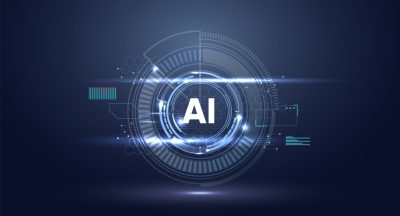How AI reads insurance policies so you don’t have to
Historically, insurance companies relied on good old-fashioned paperwork—stacks and stacks of policy documents that someone had to manually go through. If you ever walked into an insurance office, you’d see rooms full of filing cabinets, and somewhere in there, an overworked analyst flipping through pages, highlighting clauses, and manually recording key details.
Even when companies started digitizing documents, the process still required a lot of human effort. Sure, you could search for a keyword, but making sense of legal language, exclusions, and policy terms? That still fell on someone’s shoulders.
Fast forward to today, and things are shifting fast. With artificial intelligence (AI) and natural language processing (NLP) stepping in, insurers are no longer stuck in the weeds of manual document review. Instead, AI-powered tools can now scan, analyze, and extract key information from policy documents in seconds—what used to take hours or even days.
The future? It’s heading towards fully automated analysis, where AI doesn’t just extract information but also flags risks, suggests coverage improvements, and even answers policyholders’ questions in plain English.
So, What’s the Deal with NLP and AI?
Before we get into how this all works in insurance, let’s break down the tech behind it.
Artificial Intelligence is the broad field of machines mimicking human intelligence, and NLP is a specific branch that focuses on helping computers understand and process human language, written or spoken. Think of how you talk to Siri or Alexa; they use NLP to figure out what you mean, even if you don’t phrase things perfectly.
Now, when it comes to analyzing documents, NLP isn’t just looking for keywords. It understands context, meaning, and even nuances.
If an insurance policy says, “Coverage is not applicable in cases of intentional misconduct,” an NLP model can figure out that it’s an exclusion clause. More importantly, it can compare it to other policies and say, “Hey, this insurer covers similar cases, but this one doesn’t.”
Where NLP is Making Insurance Less of a Headache
Now, let’s take a closer look at how NLP is streamlining processes for both insurers and policyholders.
To begin with, underwriting is undergoing a significant transformation. Instead of an underwriter spending hours reviewing policy details and risk factors, an AI system with NLP can break down a 50-page document in minutes, highlighting what’s important and relevant. It helps insurers price policies more accurately and make decisions faster.
Claims processing is another area where NLP is making huge progress. When a claim is filed, insurers need to check if it aligns with the policy terms. Traditionally, this meant a claims adjuster combing through documents and cross-referencing them with the claim. With NLP, this process is almost instant. The AI reads the claim, compares it with policy conditions, and even predicts the likelihood of approval or denial.
Then there’s compliance. Regulators have strict rules about how policies should be written, and any slip-ups can lead to hefty fines. Instead of having teams manually review documents for compliance, NLP-driven tools can scan them for regulatory red flags.
And let’s not forget customer service. Chatbots and virtual assistants powered by NLP can answer customer questions about policy coverage without making them wade through pages of fine print. Someone can just type, “Am I covered if my basement floods?” and get a clear answer instead of a 10-page policy PDF.
The Companies Making It Happen
A bunch of insurtech companies are already deep in this space, making AI-powered policy analysis a reality.
Lenderdock specializes in streamlining insurance documentation, with a strong emphasis on policy verification. Our platform allows insurers and financial institutions to confirm coverage details instantly, eliminating the inefficiencies of manual verification.
By providing real-time validation, we help insurers reduce administrative burdens and improve operational efficiency, ensuring that resources are allocated more effectively.
Hyperscience is another Insurtech player. They’ve built an AI platform that reads and understands documents with near-human accuracy. It’s being used by insurance firms to extract key details from policy documents, cutting manual work significantly.
Then there’s Shift Technology. They’re best known for fraud detection, but their NLP-driven systems also analyze claims and policy documents, helping insurers process claims faster and catch inconsistencies.
Wrapping It Up
Insurance has always been a paper-heavy industry, but AI and NLP are changing it.
No more drowning in paperwork or spending hours trying to make sense of policy language—these tools are making it faster, smarter, and more efficient.
And as these technologies keep getting better, we might just reach a point where policy analysis is fully automated, giving insurers more time to focus on what really matters: helping customers.


